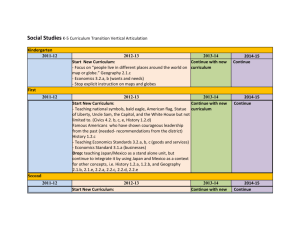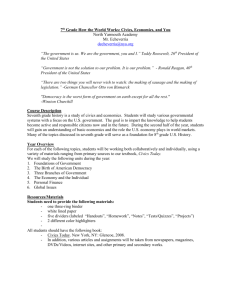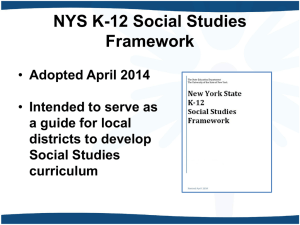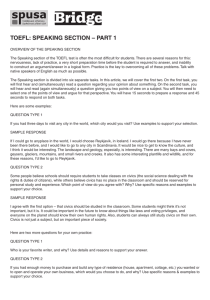MS Social Studies Civics and Economics
advertisement
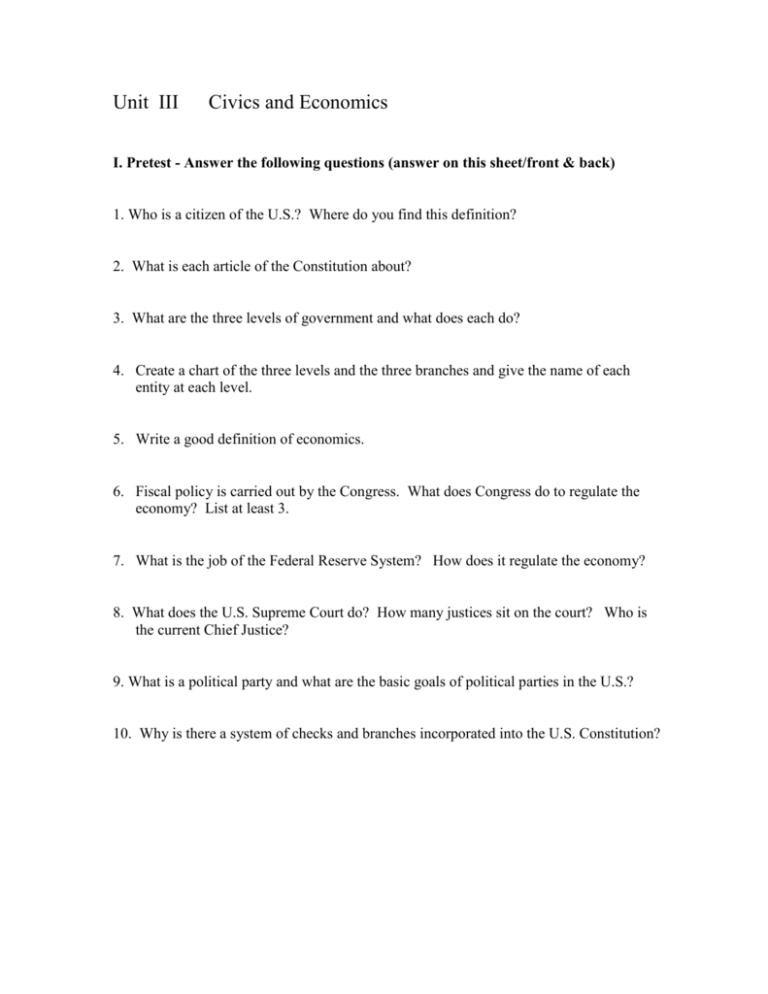
Unit III Civics and Economics I. Pretest - Answer the following questions (answer on this sheet/front & back) 1. Who is a citizen of the U.S.? Where do you find this definition? 2. What is each article of the Constitution about? 3. What are the three levels of government and what does each do? 4. Create a chart of the three levels and the three branches and give the name of each entity at each level. 5. Write a good definition of economics. 6. Fiscal policy is carried out by the Congress. What does Congress do to regulate the economy? List at least 3. 7. What is the job of the Federal Reserve System? How does it regulate the economy? 8. What does the U.S. Supreme Court do? How many justices sit on the court? Who is the current Chief Justice? 9. What is a political party and what are the basic goals of political parties in the U.S.? 10. Why is there a system of checks and branches incorporated into the U.S. Constitution? Answers to the Pretest: (check you own answers) 1. Amendment XIV defines citizenship. A citizen is a person born or naturalized in the U.S. who is subject to the jurisdiction of the United States. 2. Article I – the National Legislature, Article II – the National Executive, Article III – the National Judiciary, Article IV – relations among the states, Article V – the amending process, Article VI – General Provisions, Article VII - the Ratification Process. 3. The levels of government are the national, state, and local. 4. National State Local Legislative Congress General Assembly Board of Supervisor Executive President Governor County Administrator Judicial Federal Courts State Courts No local courts 5. Economics is the study of how people use scarce or limited resources to satisfy needs or wants. The problem is that needs or wants tend to be unlimited and resources are limited. 6. Using fiscal policy, Congress can raise or lower taxes, increase social spending, create public service jobs. 7. The Federal Reserve System regulates the money supply in the U.S. and regulates banking. To regulate the money supply, the FRS can raise or lower interest rates or the required reserve of member banks. 8. There are nine justices on the U.S. Supreme Court and Justice Roberts is the Chief. This court determines if laws are constitutional and hears appeals from the lower federal courts. 9. A political party is an organized group of people with similar beliefs who work to win elections and gain control of the government via the legislative and executive branches. 10. The system of checks and balances attempts to keep one branch of government from gaining too much power over the other branches. II. SOLs and the Enhanced Scope and Sequence for Civics and Economics Go to the Department of Education home page (www.pen.k12.va.us) and look under SOLs. Go to the Social Studies sections and locate the SOLs for Civics and Economics. Print a copy of the SOLs and highlight the main SOLs. Using the Enhanced Scope and Sequence complete the following: Assignment – Using CE 9, CE 10, and CE 11 outline the process of teaching these SOLs. Include a brief description of the 15 sessions and the attachments. Begin on page 200 and end on page 230. Use your own paper (typed), punch holes and put in notebook. III. Topics for research and discussion: These are topics selected for you to read and take notes on because they are the topics most difficult for students taking the Civics/Economics SOL test. For your research use the text book for Civics/Economics that is used in your division. Use your own paper, punch holes and put in notebook. Give the name of the textbook from your division that you are using (publisher, date of publication, and author). _______________________________________________________________________ _______________________________________________________________________ 1. Write a description of the Federal Reserve System. Include background information, makeup of the governing board, the process to regulate the money supply and other important information. 2. Describe the basic characteristics of the American economy. 3. Make a chart giving information on the workings of the government at each level. Who is the national executive – what does he do? Who is the state executive - What does he do? The legislature? The judicial? 4. How does one get elected President? List from ‘throwing hat into the ring’ through the swearing in. Give time – month and year….. 5. Write a brief description of the U.S. Bill of Rights (the first ten amendments). Final Test for Civics/Economics (use this sheet, punch holes and put in notebook). 1. Who gets elected President of the U. S.? 2. Why is the Federal Reserve System so important to a stable economy? 3. Describe voting in the U.S. Who votes? What are the qualifications? Why do people not vote? What is the impact of the low voter turnout in the U.S.? 4. Write a brief description of the three types of economies.
